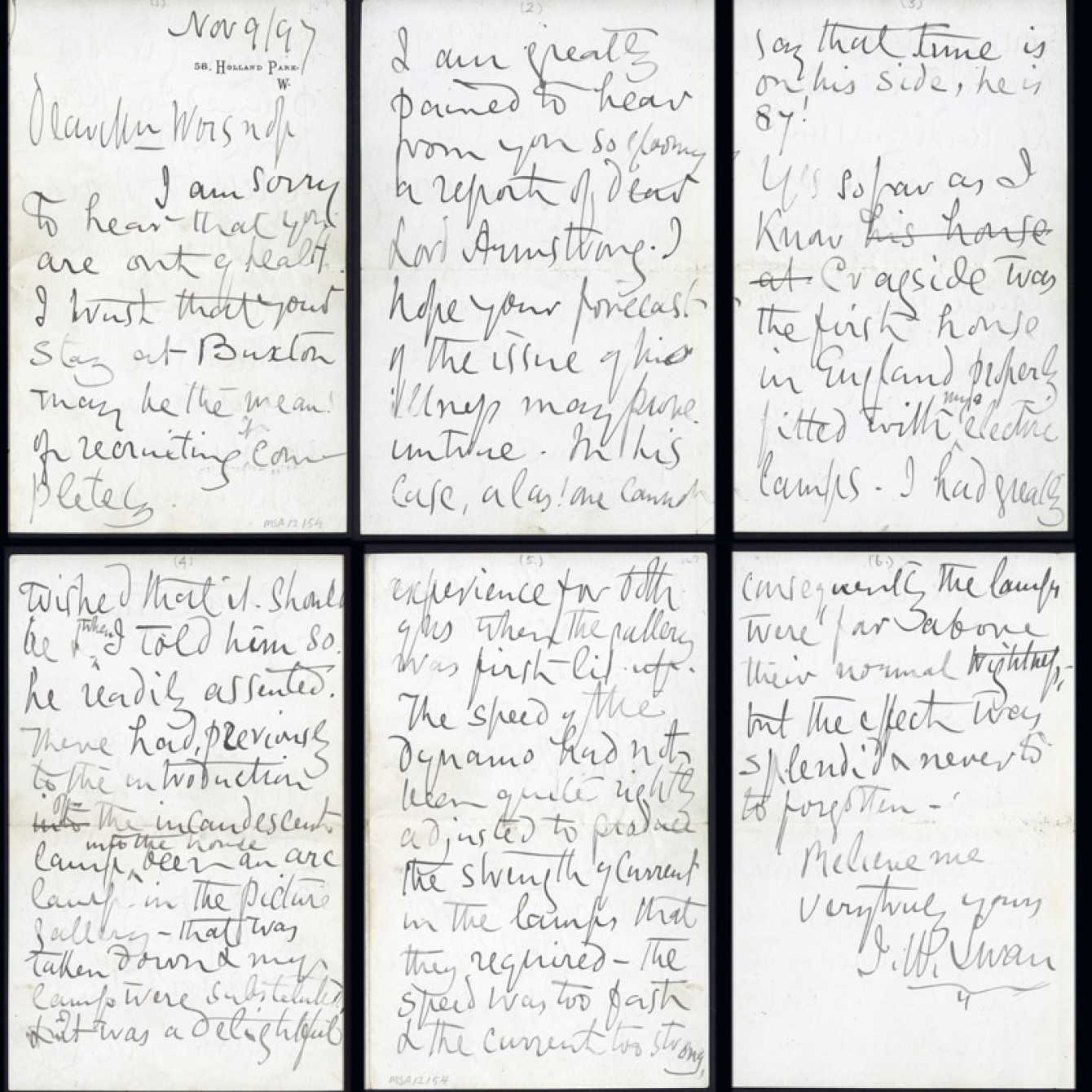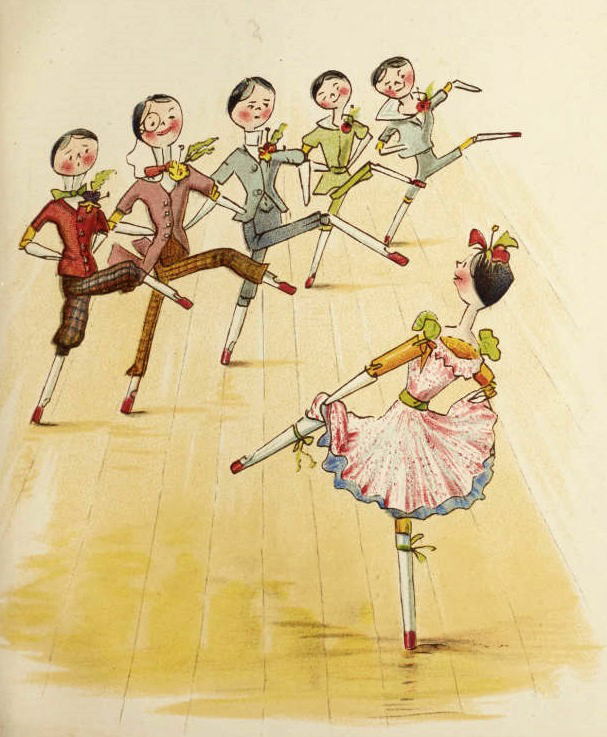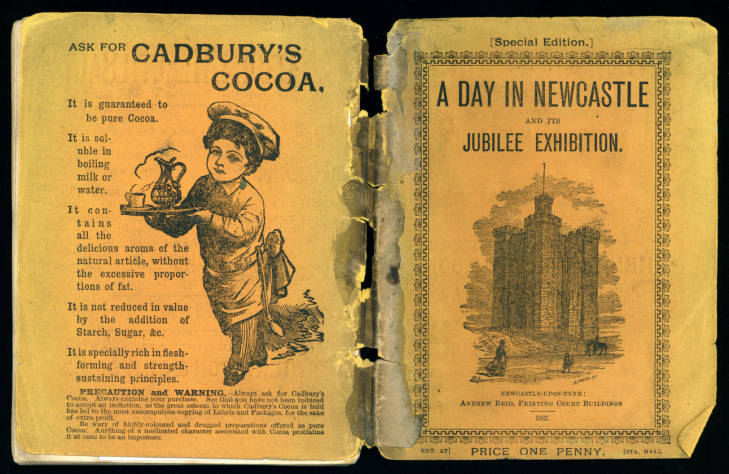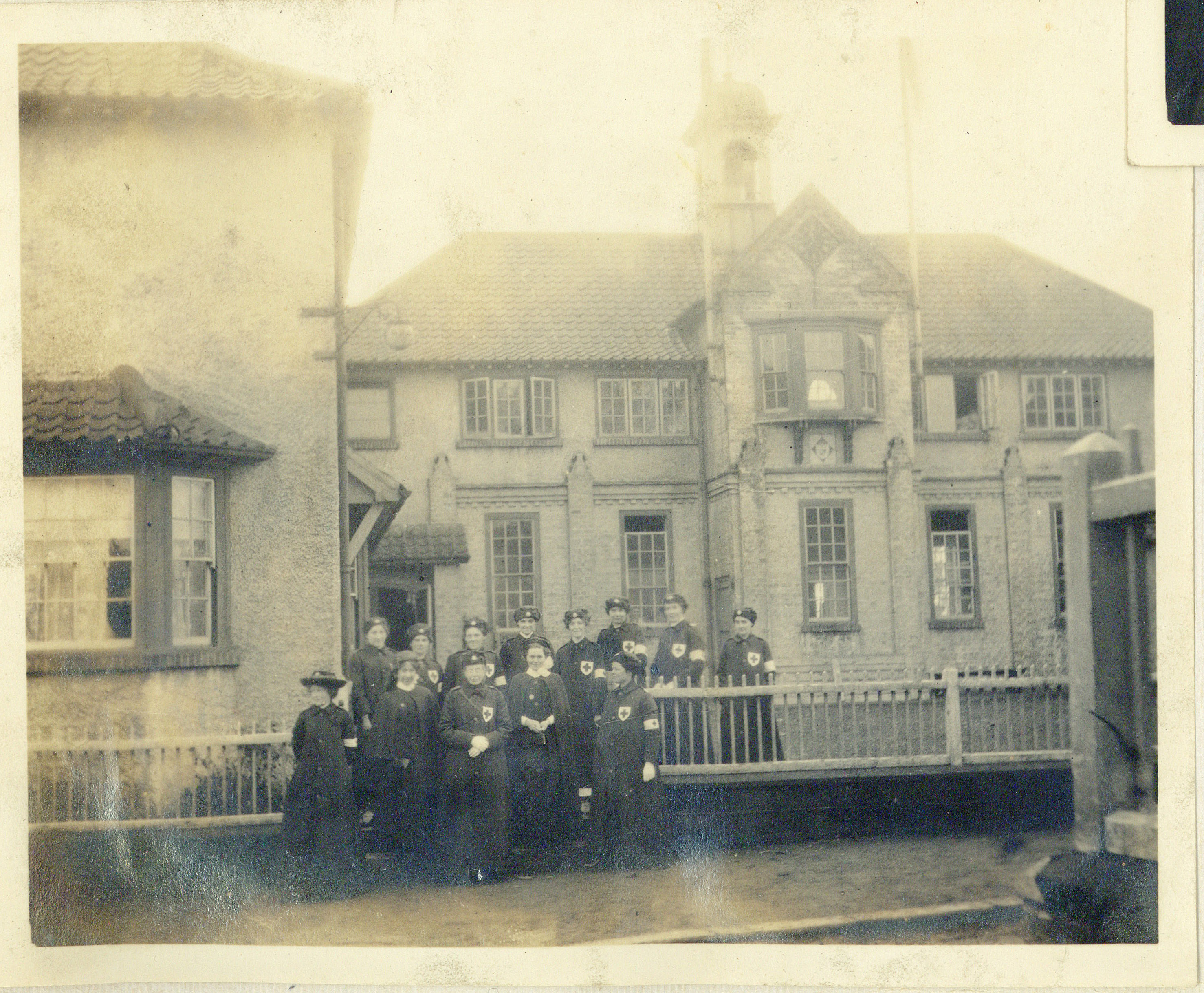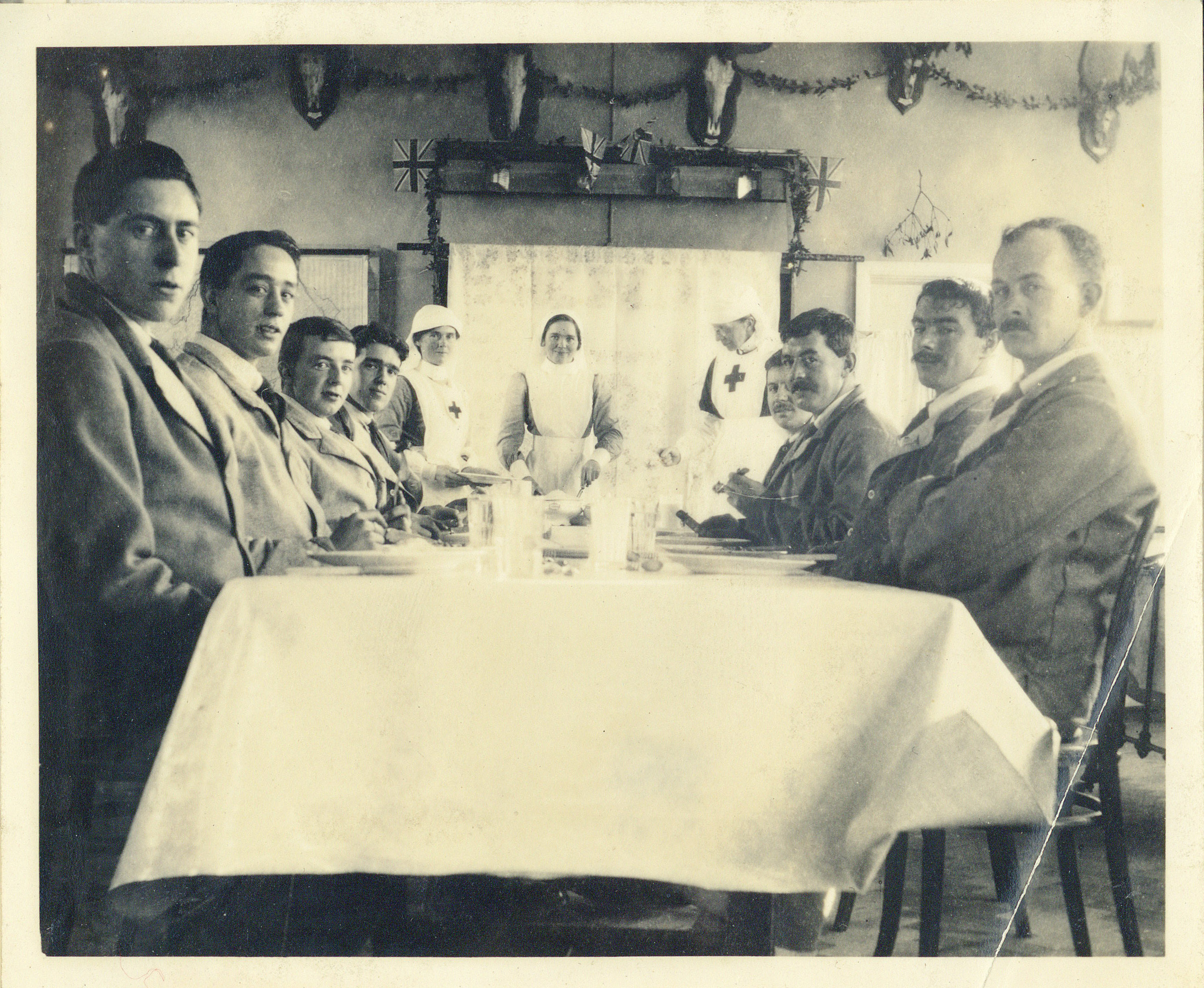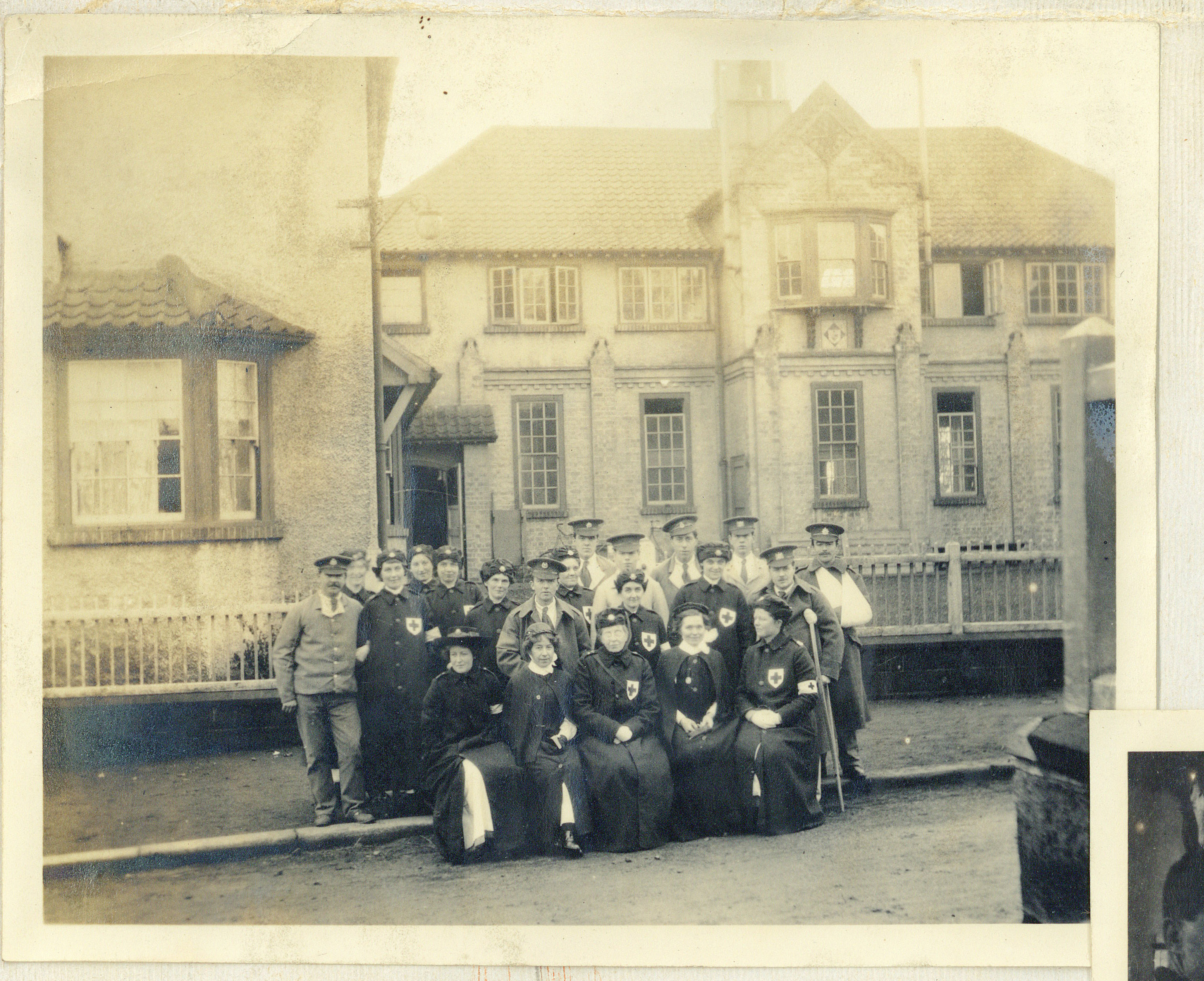Inner pages of a programme for a Christmas pantomime, ‘Dick Whittington’, produced by army troops and directed by Lieutenant Walter Thomas (Thomas Baker Brown Archive, TBB/1/9/1)This is a programme for a 1917 Christmas pantomime, ‘Dick Whittington’, produced by army troops and directed by Lieutenant Walter Thomas.
Thomas Baker Brown, born 22nd December 1896, a soldier who fought in World War I. In December 1915, he was serving in the ‘Clerks Platoon’ for the 6th Northumberland Fusiliers at a training camp at Scarcroft School, York. As a soldier, or “tommy”, training would begin with basic physical fitness, drill, march discipline and essential field craft. Tommies would later specialise in a role and Brown received training in bombing, signalling and musketry. He suffered from poor eyesight and was issued with glasses. After failing to be transferred to the Royal Flying Corps, Brown was placed into the signalling section and later drafted to France alongside his brother George, as part of the 2/6th Northumberland Fusiliers, 32nd Division.
By the 1st August 1916, Brown was moved to the 21st Northumberland Fusiliers (2nd Tyneside Scottish 37th Division) and was sent on his first journey to the front line trenches. Later, in March 1917, Brown was awarded the Military Medal for his ‘heroism’ and ‘bravery’.








